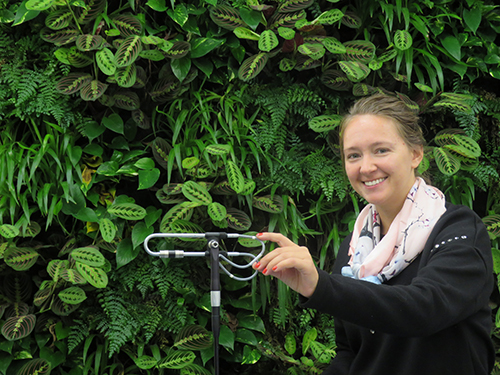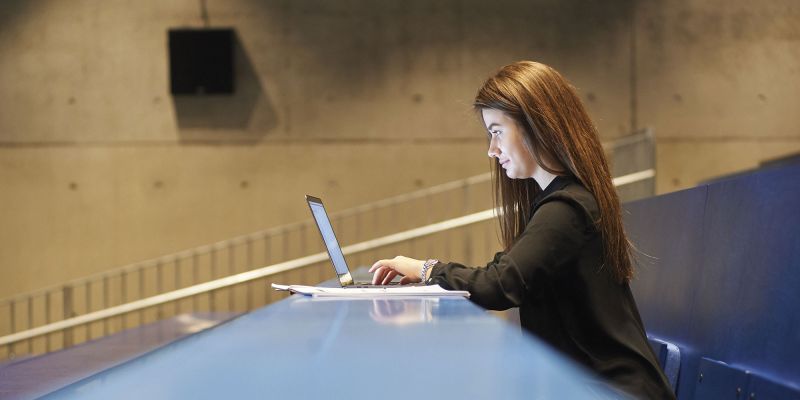
Tests in three central London locations show that pedestrians who are within 2m of a living wall, which is made up of different plants, notice a 30% reduction.
- Best results with lorry, bus, train noise
- 80% of people would choose business with living wall
- 30% would pay extra at business with one. Half would rather help with upkeep
- New measuring tool in development to help people design walls
Dr Anna Romanova of the University of Greenwich led the study at three central London locations. She says her research group has the magic formula of plant, soil and water combination.
"English Ivy does the best job, followed by Bergenia crassifolia," says Anna. "The best results are on mid-range sounds (400hz to 1.2khz) – for example bin lorries, buses, trains and Tube. Higher frequency sounds can still get through, so a truck's engine might sound quieter, but you'd still hear the squeak of the breaks.
"You can change the wall specifications for different results, depending on environment. The solution for airport areas will be different to busy city centre squares or a through road.
"We found that 80% of people who took part would choose a business that had a living wall over one that didn't. This was especially true of places such as cafes, bars and restaurants. About 30% of people would be ok paying extra for something, such as a cup of coffee, at a café that had a living wall."
The results also showed that just over half the people surveyed would prefer an 'in kind' contribution to support the living walls, rather than paying extra. For example, they might look after the plants.
Over 300 people filled out the 20-question survey at different times of the year. The tests were carried out at living walls next to Edgeware Road Tube station; 20 Fenchurch Street (the walkie-talkie building); and the Mermaid event space at Puddle Dock, near Blackfriars station.
Anna is working on a measuring tool which accurately captures sound absorption in different environments. These can then be further modelled. She believes current methods – basically a loudspeaker and one microphone – are not fit for purpose and her new technique will become the gold standard.
She adds: "These original methods are from 30 years ago - a single microphone picks up a lot of unwanted sound waves, such as the reflection from the ground. We use a directivity speaker and a set of two sound intensity probes for far greater accuracy."
University lab testing of living walls is ongoing, including benchmarking against brick, plaster and plywood.

